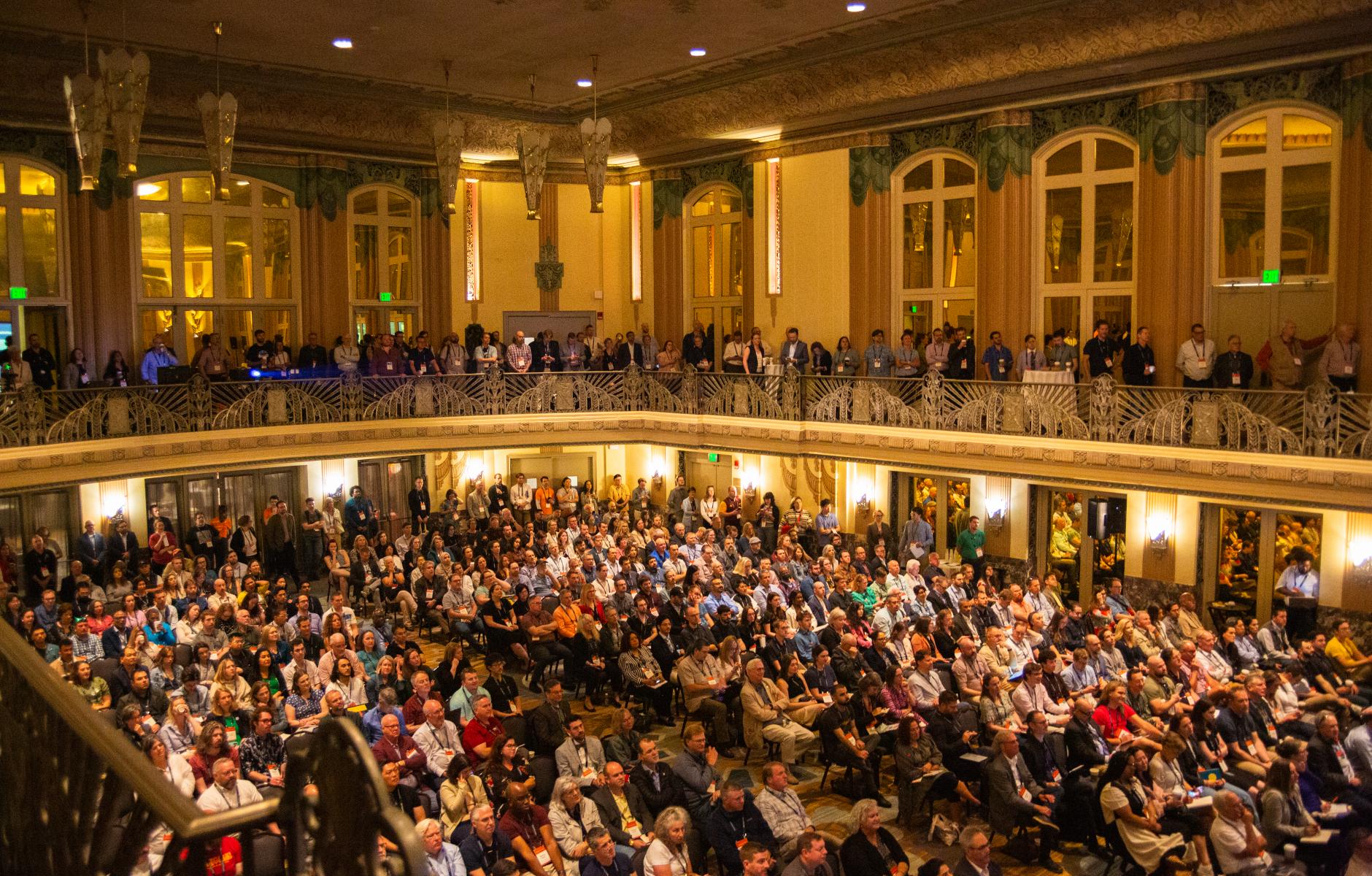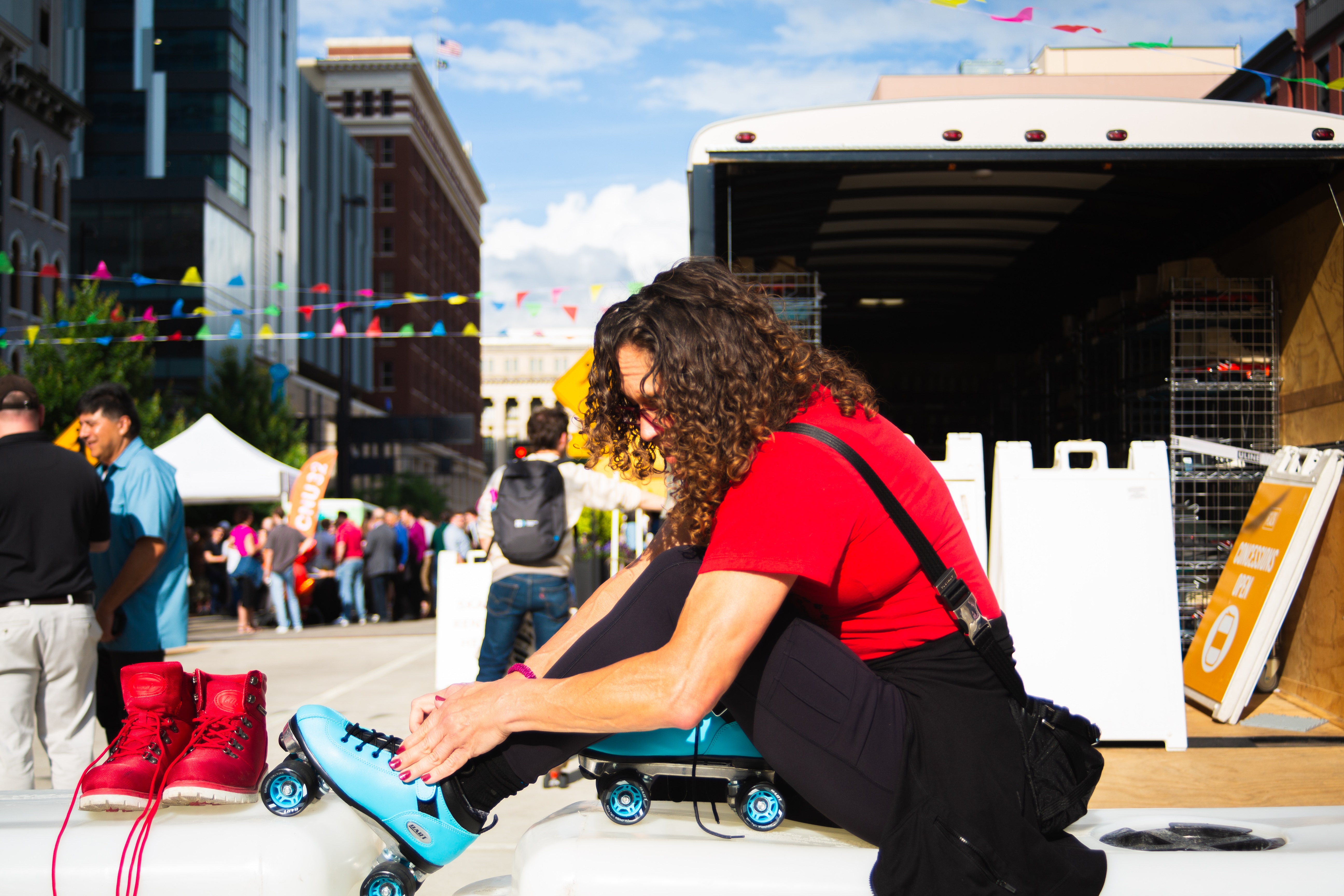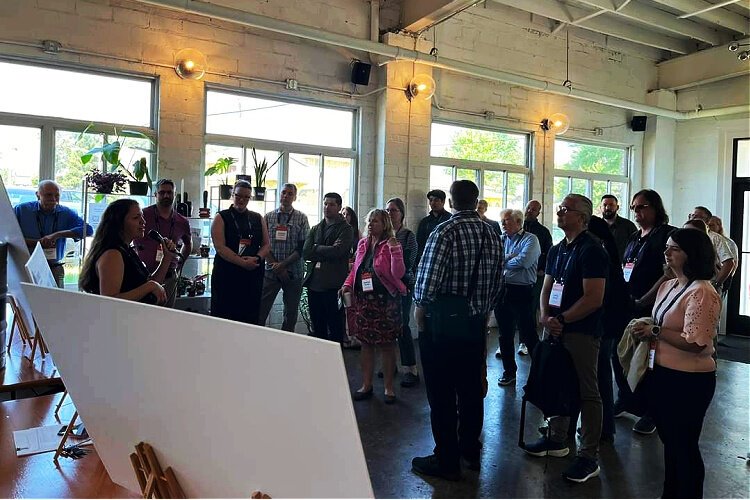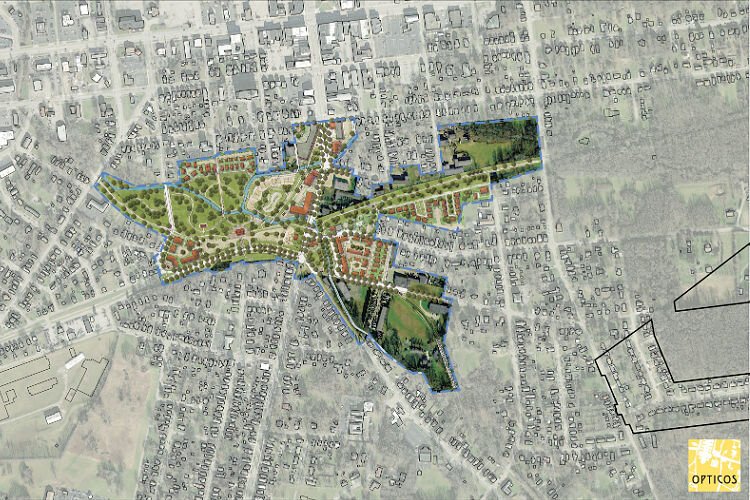
Build the city, but for whom?
Note: this article first appeared in Soapbox Cincinnati.
This past May, national nonprofit the Congress for the New Urbanism (CNU) held their annual flagship event in Cincinnati. The event gathered 1,454 total attendees from across the country (and world) to share ideas and inspiration about urban development, the built environment, and the power of place.
Congress for the New Urbanism is a national nonprofit that champions better design of cities and towns—urban places designed for people.
“Good” urbanism, New Urbanists argue, is about much more than building good-looking and efficient cities. It’s about building cities that are designed to be “healthy places for people and businesses to thrive and prosper.”
Development patterns of the latter 20th Century dispersed housing far from urban centers and destabilized urban communities by dismantling necessary infrastructure. New investments then prioritized commerce and commuter ease through cities. But, as a model for development, New Urbanism prioritizes human-scale uses of urban space and asks how public, private, and nonprofit partners can work together to promote a method of urban development that concerns itself with human flourishing within the city.

A recap of CNU.32 Cincinnati
The CNU.32 Cincinnati event centered its programming at the Hilton Cincinnati Netherland Plaza hotel in downtown Cincinnati, while also offering neighborhood tours and social events in other places around town.
Cincinnati Mayor Aftab Pureval and CNU co-founder Peter Calthorpe opened the event with a conversation about Restorative Urbanism, the theme for this year’s entire Congress. They discussed the importance of coordinating housing and transportation investments across public, private, and nonprofit sectors.
Another mainstage event featured Dr. Andre M. Perry, Senior Fellow at Brookings Metro, a scholar-in-residence at American University and professor at Washington University. He spoke about the unequal impacts of irresponsible urban development and climate change on vulnerable communities.
The closing keynote of the entire CNU.32 event was a presentation by world-renowned urbanism expert Carlos Moreno on the subject of “the 15-minute city,” a popular concept among New Urbanists. In simplest terms, the 15-minute city is an ideal geographic location where a resident can find everything they need within a travel distance of 15 minutes, preferably on foot, bicycle, or by public transit.
Other breakout session topics varied wildly, from conversations about the German heritage of Cincinnati and its impact on the city’s development to a workshop about “Agroforestry and Urban Forests,” an art session focused on “The Human Figure in Architectural Detail,” and a conversation about how churches can use placemaking initiatives to transform and engage with their community.
CNU organizers also scheduled plenty of off-site events to keep attendees active and engaged. There was an early morning running club, evening happy hours, sketching tours of the riverfront, Cincinnati Streetcar tours, bike tours, and neighborhood tours through Over-the-Rhine, Covington, CUF (and the University of Cincinnati), Mariemont, Walnut Hills, and more.
Feedback from the event was very positive.
One attendee commented, “CNU exceeded my expectations in terms of the place, the work that Cincinnnati’s New Urbanists have done to revive it, the tours, and the events in public spaces. The venue itself was magnificent.”
Another wrote, “The location and city were great hosts and the conversations will always exceed what I think I will find. It reinvigorates my practice [sic] and why I do what I do for a living.”

Cincinnati Legacy Projects leave impact
CNU’s annual Congress event is in a different location every year and, in preparation for each year’s Congress, CNU invites organizations in the host region to apply for Legacy Projects. These projects provide pro-bono professional services and CNU expertise and support to further New Urbanism efforts in the local community.
This year’s projects were in Norwood, Camp Washington, Xenia, and Amelia. The projects were launched locally months before the CNU.32 event and had produced actionable results by the time the Congress came to town. Participating communities then presented their projects at the Congress event.
Alisha Loch is a resident of Norwood, Ohio. She was a founding member of Norwood Together and currently sits on the board of the organization. Norwood Together came to life in 2017 and officially incorporated in 2020. Since then, it has brought positive change to the community by exploring concrete, actionable ideas for bringing residents together and fostering economic development.
Loch was first introduced to CNU when Norwood Together entered the 2022 Strongest Town Competition, sponsored by Strong Towns.
The annual contest pitts communities against each other in a friendly competition to prove they are adopting a “Strong Town” approach. Strong Towns describes this as “any town, big or small, that prioritizes making progress in transportation, housing, and fiscal resiliency for the long-term benefit of its people.”
Norwood was the runner-up in that competition, second to Jasper, Indiana, but the process introduced Loch to the interconnected national network of urbanists, including the CNU Midwest chapter and fellow Cincinnatians who were working to secure Cincinnati as the location for the 2024 Congress event. She ended up serving on the Local Host Committee for the CNU.32 event and helped lead the Norwood tour.
Norwood’s CNU Legacy Project was a partnership between Norwood Together, the City of Norwood, and Stantec’s Urban Spaces to create a plan for connecting new and existing community destinations. The project focused on multimodal connections between nearby amenities like parks, grocery stores, schools, and entertainment destinations.
In Camp Washington, CNU partnered with the Camp Washington Urban Redevelopment Corporation (CWURC), StreetPlans, and ARUP to develop a business district vision map that would help the community dream together and prioritize future development opportunities.
Sidney Prigge is the executive director of CWURC. She says that the most significant impact of the CNU partnership is “learning of the huge potential Camp Washington has for activation and placemaking.”
In addition to partnering on the Legacy Project, Prigge co-led a workshop session at the CNU Congress event with Ed Janoff of the Union Square Partnership in New York City and Julie Flynn of The Street Plans Collaborative in San Francisco. Their workshop asked the question: “Placemaking: a buzz word for gentrifying neighborhoods, or a tool for restorative urbanism?”
They each shared their experience of navigating the ever-evolving needs and desires of their different urban environments, ensuring that placemaking initiatives restore and sustain the existing residents, visitors, and workers of their community.
“This session really showcased the different levels of placemaking and the different steps needed to successfully complete placemaking initiatives,” Prigge explains.
“CWURC is still in the beginning phases of creating policies to promote placemaking by all and for all, where Union Square Partnership is in the implementation stage. They are doing incredible work in using placemaking to promote social justice and equality.”
She continues, “It was an honor to be on the same panel with individuals with so much knowledge and experience.”

The Legacy Projects in Xenia and Amelia focused on enacting New Urbanist principles in two of Cincinnati’s more rural ex-urban cities.
In Xenia, north of Cincinnati, the city partnered with CNU, Opticos Design, J Griffin Design, and Zimmerman/Volk Associates to create a vision and strategic plan for revitalizing the Hub District, an area surrounding the convergence of five regional bike trails near the popular Xenia Station park on the edge of Xenia’s downtown.
The area is a former rail hub in an industrial district. The goal of the project was to “establish the Hub District as a vibrant mixed-use neighborhood and create a variety of housing and recreational opportunities.”
Xenia City Planner Brian Forschner represented Xenia at this year’s Congress. He said it was a “unique opportunity to meet professionals from a broad geographical area, learn about new ideas and trends in urbanism, and share Xenia’s story and opportunities with a wide audience.”
East of Cincinnati, Amelia’s Legacy Project addressed the challenges of reimagining the shared Main Street district of Pierce and Batavia Townships as one, inter-connected, walkable community. The district was formerly the Village of Amelia, Ohio, but was dissolved in 2019.
Commonly seen as a pass-thru community rather than a place to stop and linger, the Legacy Project focused on helping residents and visitors access their community amenities on foot via the area’s existing public greenspace and establishing a new greenway pedestrian trail system.
Inspiration for the future
While CNU moves on from its stint in Cincinnati and continues the promotion of New Urbanism nationwide, those who attended CNU.32 are inspired to continue their work locally, as they always have.
New Urbanism, after all, is not just a movement for people; it’s a movement of people.
In Norwood, Alisha Loch explains that Norwood Together certainly didn’t “start” a grassroots urbanist movement in her neighborhood, it just helped organize it. She remembers being inspired by the cooperation and community engagement she witnessed among neighbors as a result of city-wide flooding in 2016, for example. It was clear that the most important part–the people–were already there. She credits the Strongest Town Competition with engaging interested residents in a conversation about the community’s strengths and introducing New Urbanism as a model for future development and progress.
“Sometimes [New Urbanism] can get very niche and expensive, but sometimes it can be a very wholesome way to make a neighborhood great for everyone. I think Norwood has a great opportunity to keep what it’s had in the past and make people feel like they’re a part of something small and special here, but also connected to the opportunities of Cincinnati.”
Norwood, she says, already has the infrastructure necessary to be a “pedestrian haven” and a 15-minute city. It just needs to capitalize on its assets and motivate residents to support concrete, tangible plans for its future.




